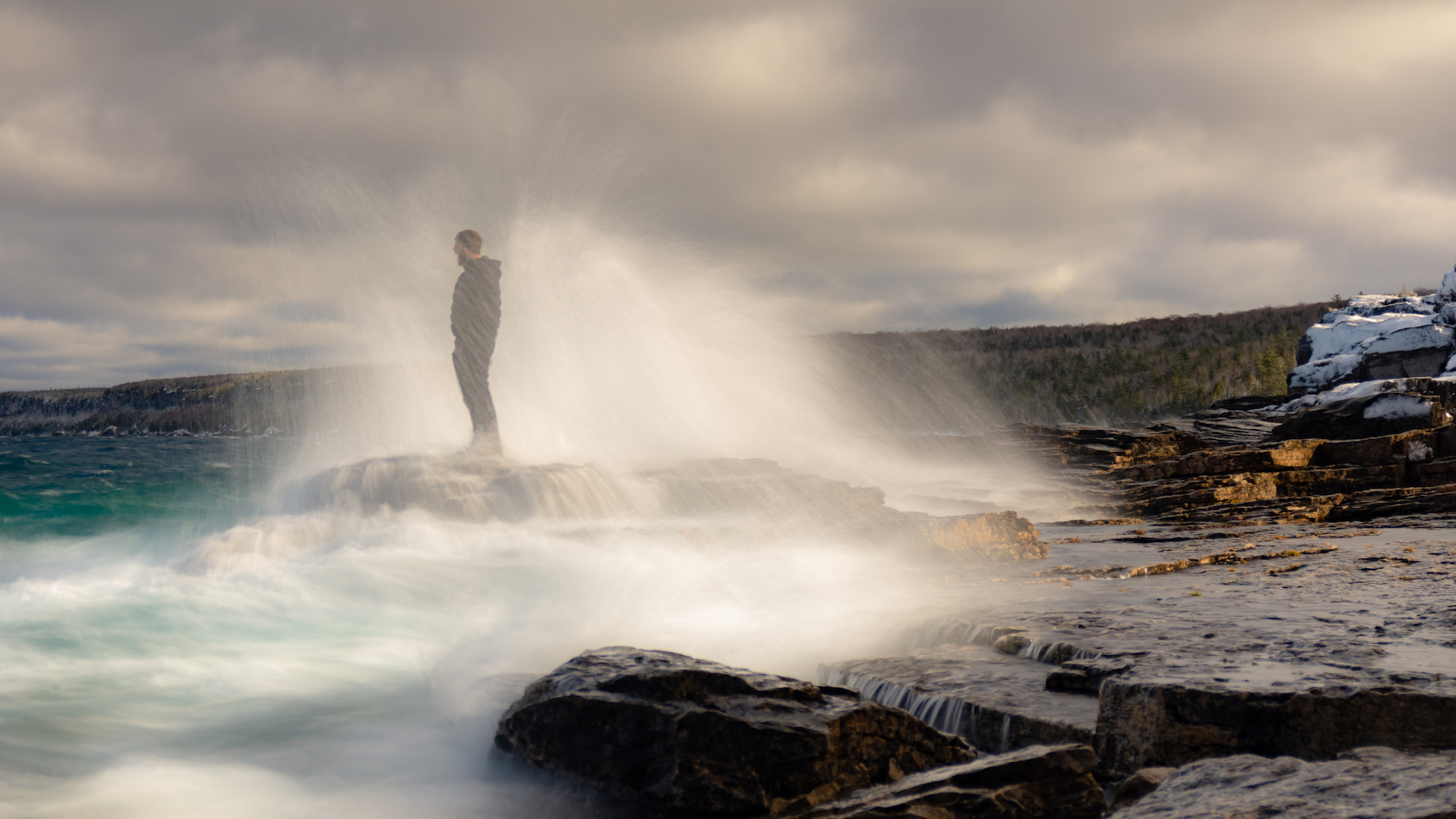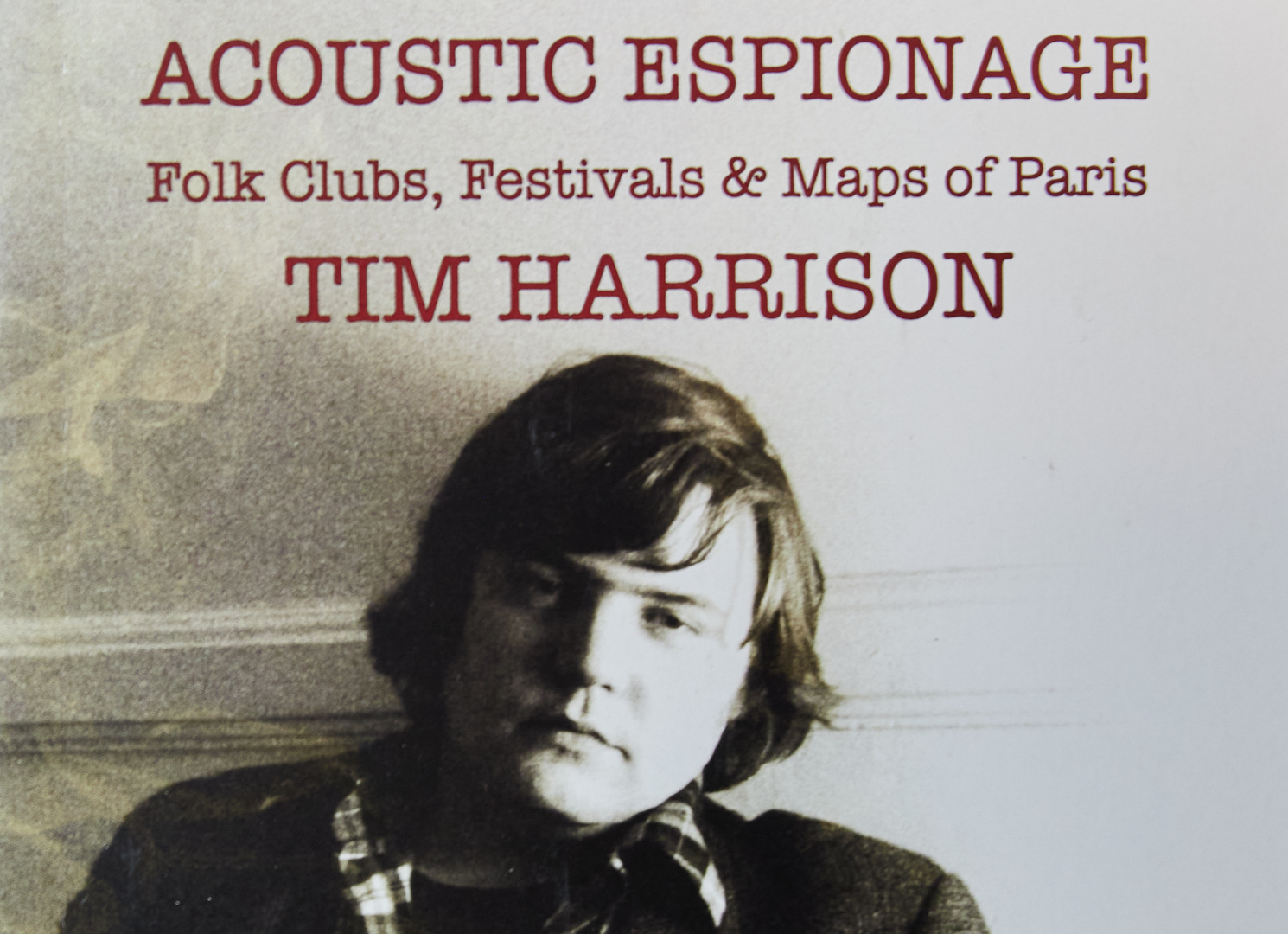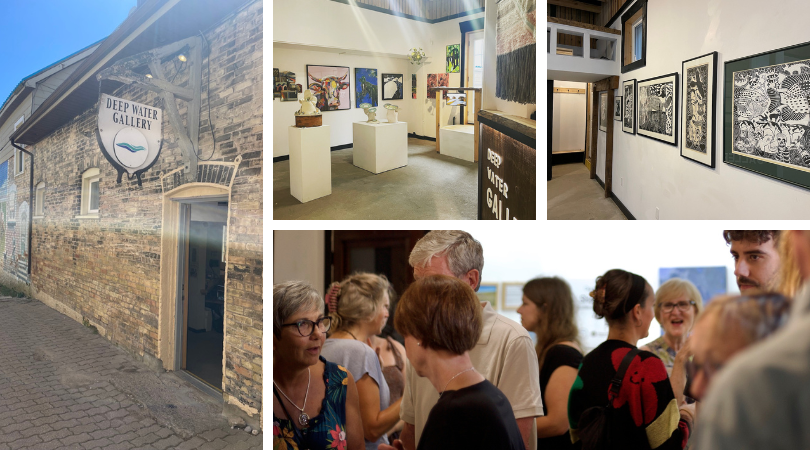Relentless wind, massive crashing waves, and ice-covered rocks and trees.
The summer has passed and many of the cottages have shut down for the season. Gone are the endless line of cars heading north on Highway 6, the massive crowds at the Grotto, and the campers. It’s winter on the Bruce Peninsula, which brings unpredictable weather, bitter cold, and incredible scenery.
The pines that were once surrounded by people are now covered in thick cloaks of ice from the fierce wind and waves crashing against the coast. The sun bleached limestone coves that were full of swimmers enjoying the emerald blue water are now filled with implacable sheets of ice layered upon each other.
The trails that crisscross the peninsula are now covered-in blankets of snow, creating a vastly different scene from just weeks before. This unique and unforgiving expression of nature is what attracts me to the Bruce over the winter months and offers a raw view that you must be prepared for if you want to be invited back.
“I learned a hard lesson that night: the Bruce has two very different personalities that demand respect.“
My first winter experience on the Bruce came as the snow was first giving way to spring and the National Park had opened for the first week of the season. On a whim we chucked our gear in the car and made the drive from Guelph. We arrived at a campsite with pockets of snow still present, slick trails, and ice-covered rocks. Cold temperatures provided a beautiful star-filled sky and a classic dark-sky Bruce scene. After shooting for a few hours, we made our way back to the tent and I learned quickly that my summer sleeping bag and missing mattress pad were going to provide an uncomfortable night at best. I layered what I could find in my car to stay off the ground as much as possible, but the few hours of sleep we got were spent shivering uncontrollably and narrowly avoiding hypothermia.


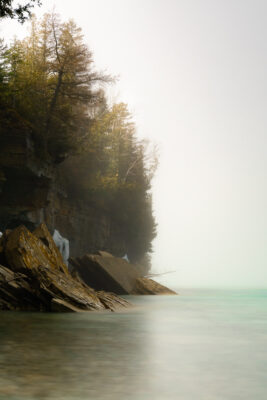

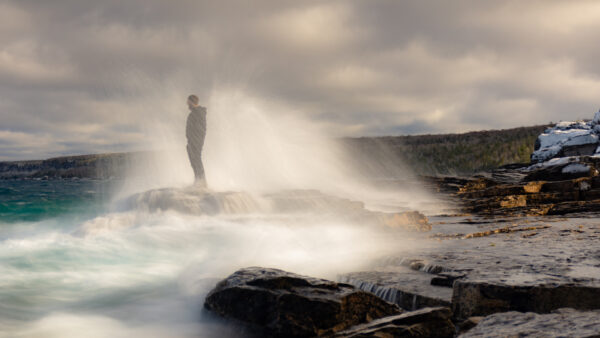
Since then, we’ve turned that early season trip into an annual ritual and I’ve become significantly more prepared for it as I built up my gear. It was my first real experience on the Bruce, and far from the most positive one, but the scenery had me hooked.
5+ years later and significantly more experienced with camping and photography, I make a point of returning to the peninsula every winter. It can change massively from week-to-week and provide many unique photography opportunities. However, it becomes significantly more hazardous in the winter and you need to ensure you are prepared. The weather can change quickly, the snow can cover deep slots in the rocks along the trail, and the ice can make any step along the shoreline unstable. It’s the wild and untamed side of the Bruce that I truly enjoy navigating and capturing.
The unique and raw beauty of the Bruce is definitely something worth viewing, but – ensure that you’re prepared for it. It creates a unique scene that many people are lured into seeing for themselves every winter, but they’re often unprepared, lulled into smug complacency by the idyllic landscapes of the green season. It’s not a place for jeans, all-season tires, or Instagram photo-ops.
The Bruce commands absolute respect and if you fail to pay the piper, you’ll be effortlessly swatted down like a fly at a BBQ. Full stop.
There are many places across Ontario that offer winter escapes and scenery that’s uniquely Canadian, but the Bruce Peninsula provides an unfiltered and raw version of winter in Ontario.
It is rugged, it is beautiful, and it insists those that want to view the raw beauty of the Bruce through one of the most beautiful seasons of the year come ready to play by its rules. I learned the hard way, and ever since have been addicted to appeasing the attitude of the frozen Peninsula. It constantly draws the attention of my lens and will continue to do so for years to come.
Words and photos by Adrian Brown

